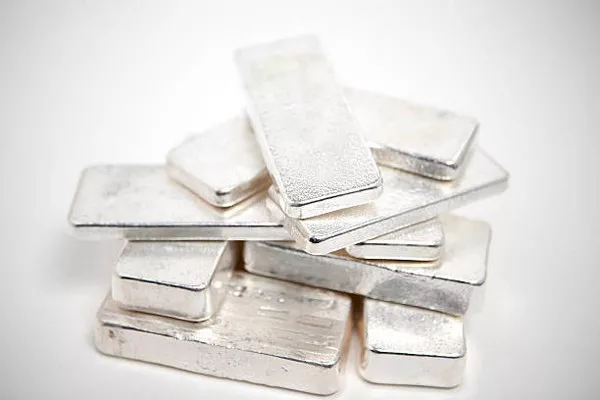The silver spot price, a crucial metric in global financial markets, serves as a benchmark for valuing silver and related financial instruments. Understanding how this price is determined is essential for investors, traders, and stakeholders in the silver market. Despite its importance, the mechanisms behind the determination of the silver spot price are often complex and multifaceted. In this article, we delve into the intricate processes that influence and determine the silver spot price.
Overview of the Silver Market
Before delving into the specifics of how the silver spot price is determined, it is imperative to grasp the fundamentals of the silver market. Silver, a precious metal with diverse industrial and investment applications, is traded globally through various channels, including futures exchanges, over-the-counter markets, and physical bullion markets.
Factors Influencing the Silver Spot Price
Numerous factors impact the silver spot price, ranging from macroeconomic indicators to geopolitical events. Some of the key factors include:
Supply and Demand Dynamics: Like any commodity, silver’s spot price is significantly influenced by the interplay between supply and demand dynamics. Factors such as mining production, industrial demand, investor sentiment, and recycling rates all contribute to determining the equilibrium price of silver.
Economic Indicators: Macroeconomic indicators, including inflation rates, interest rates, GDP growth, and currency movements, play a pivotal role in shaping investor sentiment towards silver. For instance, a weakening currency or rising inflationary pressures may increase the attractiveness of silver as a store of value, thereby pushing its spot price higher.
Investor Sentiment: Silver, often perceived as a safe-haven asset, tends to exhibit price movements driven by investor sentiment during times of economic uncertainty or market volatility. Factors such as geopolitical tensions, central bank policies, and broader market sentiment can influence investors’ appetite for silver as a hedge against systemic risks.
Technological Advancements: Silver’s industrial applications in sectors such as electronics, solar energy, and healthcare contribute significantly to its demand profile. Technological advancements and innovations that increase the efficiency or utility of silver in various industries can have a profound impact on its spot price.
Market Speculation: Speculative activity in silver futures and derivatives markets can lead to short-term price fluctuations, as traders seek to capitalize on perceived price trends or arbitrage opportunities. While speculative activity can introduce volatility, it also provides liquidity to the market and facilitates price discovery.
Now that we have outlined the key factors influencing the silver spot price, let us explore the mechanisms through which this price is determined.
Determinants of the Silver Spot Price
The silver spot price refers to the current market price at which silver is bought or sold for immediate delivery, typically within two business days. Unlike other financial instruments, such as stocks or bonds, silver spot prices are not determined by a centralized exchange. Instead, they are influenced by a combination of trading activity across various platforms, including futures exchanges, over-the-counter markets, and physical bullion markets. The following are the primary mechanisms through which the silver spot price is determined:
London Bullion Market Association (LBMA) Fixing: The LBMA, a key player in the global precious metals market, facilitates the daily fixing of silver prices through a benchmarking process known as the “London Silver Price.” This process involves a panel of participating banks submitting their buy and sell orders for silver over a designated period, during which an electronic auction determines the equilibrium price at which the maximum volume of silver can be traded. The resulting benchmark price, known as the LBMA Silver Price, serves as a reference point for silver transactions worldwide.
Futures Exchanges: Silver futures contracts, traded on exchanges such as the Chicago Mercantile Exchange (CME) and the Tokyo Commodity Exchange (TOCOM), play a crucial role in price discovery and risk management. Futures prices reflect market participants’ expectations regarding future supply and demand dynamics, as well as broader macroeconomic trends. The continuous trading of silver futures contracts throughout the trading day provides real-time price information, which influences the spot price of silver.
Over-the-Counter (OTC) Markets: In addition to exchange-traded futures contracts, silver is also traded over-the-counter (OTC) through bilateral agreements between market participants, including banks, bullion dealers, and institutional investors. OTC transactions allow for greater flexibility in terms of contract specifications and settlement arrangements, catering to the specific needs of market participants. OTC prices, determined through negotiations between buyers and sellers, contribute to the overall price discovery process in the silver market.
Physical Bullion Markets: Physical demand for silver, driven by industrial users, investors, and collectors, also influences the spot price of silver. Bullion dealers and retailers adjust their selling prices based on prevailing market conditions, including wholesale prices, transportation costs, and premiums. The physical bullion market provides an essential link between the paper markets (futures and OTC) and end-users, ensuring the efficient allocation of silver resources.
Market Participants and Liquidity Providers: Market participants, including banks, hedge funds, commodity trading firms, and individual investors, play a crucial role in determining the silver spot price through their trading activity and liquidity provision. High-frequency trading algorithms and market-making strategies contribute to price discovery and market efficiency by narrowing bid-ask spreads and enhancing market liquidity.
See also Silver Pricing: How Much Should You Pay Over Spot?
Conclusion
In conclusion, the silver spot price serves as a vital benchmark for valuing silver and related financial instruments in global markets. While influenced by a myriad of factors, including supply and demand dynamics, economic indicators, investor sentiment, technological advancements, and market speculation, the mechanisms through which the silver spot price is determined are complex and multifaceted. From the daily fixing process conducted by the LBMA to the continuous trading of futures contracts on exchanges and the bilateral agreements in OTC markets, various platforms contribute to the price discovery process in the silver market. Understanding these mechanisms is essential for investors, traders, and stakeholders seeking to navigate the dynamic landscape of the silver market and make informed decisions.


